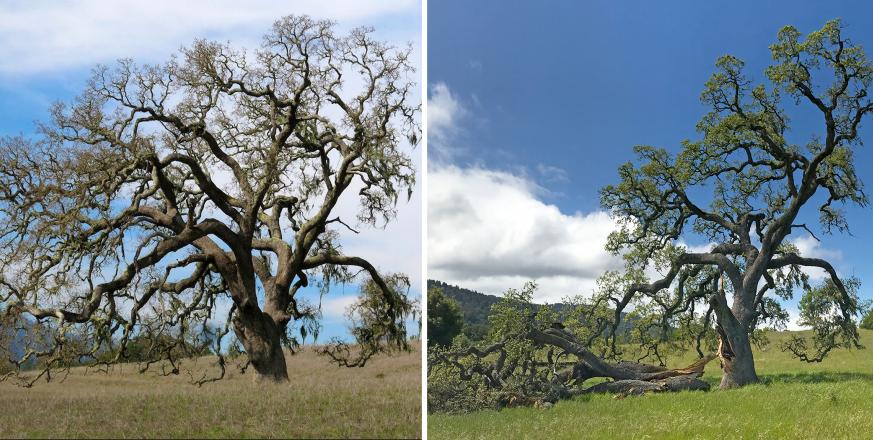The future of Valley Oak savannas?

California’s oak savannas are iconic landscapes defined by venerable, majestic oaks that govern a wide array of interacting biotic and abiotic processes and ecosystem services. Many of these foundational oaks are declining, such as the magnificent Valley Oak at JRBP pictured above, before and after it dropped more than half of its aboveground biomass in April 2017. The striking absence of younger oaks in these landscapes raises the question of what the future holds for Valley Oak savannas. Ramón Perea, Aida López-Sánchez, and Stanford professor Rodolfo Dirzo report in a new publication that deciduous oak species—Valley Oak (Quercus lobata) and Blue Oak (Quercus douglasii)—are failing to regenerate, relative to the evergreen Coast Live Oak (Quercus agrifolia), especially in open savanna where Valley Oaks are the dominant mature trees. Lacking sufficient shrub cover to shield oak seedlings from herbivory, the open savannas disproportionately favor establishment by the more browse-resistant evergreen oak seedlings. The authors report that the longterm consequence could be replacement of deciduous species by evergreen oaks.



